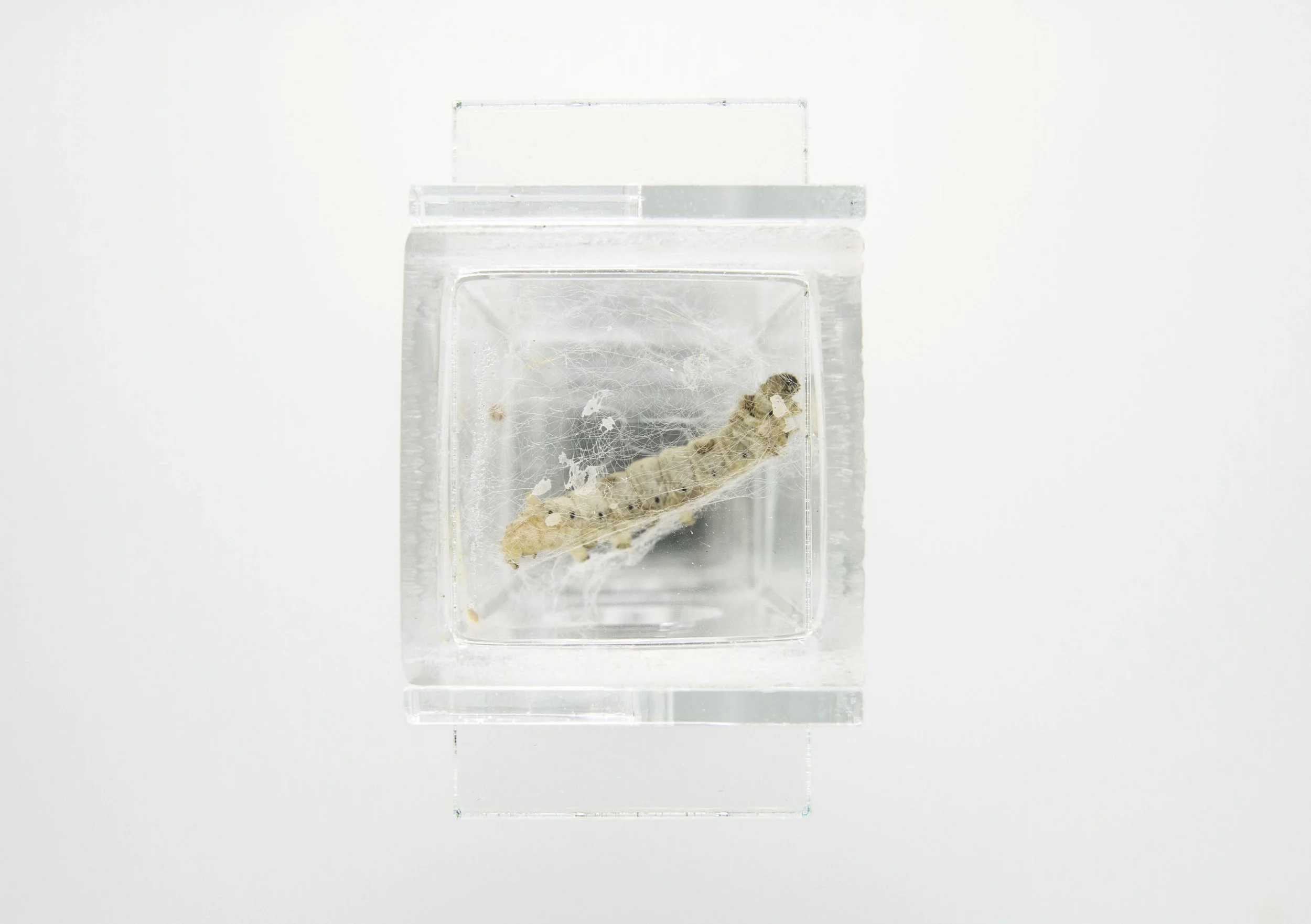












The silkworm, Bombyx mori, has a long and complex relationship with humans. For over five thousand years, this organism has been treasured for its ability to create silk, one of the most unique materials known to humans. For the past six years, The Mediated Matter Group has been researching how silkworms fabricate their threads - each worm spins about 1 kilometer of silk in its cocoon - and this process can be designed in the context of architecture.
Credit: Sunanda Sharma and Sara Wilson
All images courtesy of The Mediated Matter Group

These insects develop through five larval stages, in the last of which they spin a cocoon which protects them during the sensitive period of metamorphosis. After several days, silkmoths emerge to mate as adults.
Image Credit: João Costa

During their first four larval stages, silkworms have only one food source, white mulberry leaves (Morus alba). In the fifth phase - in which worms stop feeding and begin to spin - their behavior significantly changes.
Image Credit: Sunanda Sharma

I aim to characterize individual and group behavior of silkworms during this period to better understand this type of biological fabrication.
Image Credit: Sunanda Sharma

By using a combination of timelapse photography and videography, we observe the movements and other behaviors of silkworms across their life cycle and in response to different stimuli.
Image Credit: Sunanda Sharma

I have also begun to use OpenCV (with Python) as a tool for tracking worms and quantifying measures such as size and velocity.
Image Credit: Sunanda Sharma

Simultaneously, we study the dynamics of silkworm spinning in a variety of environments - including microgravity. In August 2019, we received an opportunity to conduct microgravity experiments as part of the MIT Space Exploration Initiative and with the Zero G Corporation.
Image Credit: Sara Wilson and Sunanda Sharma

Flyers (and our silkworms) experienced several short periods of microgravity during a parabolic flight that launched from Portsmouth International Airport, New Hampshire.
Image Credit: Joseph Kennedy

We designed and fabricated specific capsules for the support and observation of silkworms, moths, eggs, and cocoons as they journeyed through a microgravity environment.
Image Credit: Felix Kraemer

Each capsule was fitted with a GoPro Hero 5 Session to allow for real time recording. Organisms across life stages were observed before, during, and after flight.
Image Credit: Joseph Kennedy

Worms still in their feeding phases were supplied mulberry leaf-based food during the flight. Males and females were both included, in order to increase the potential for a second generation to develop.
Image Credit: Sunanda Sharma and Sara Wilson

We are currently conducting post-launch analysis to measure the differences in form and material of cocoons partially spun in microgravity versus controls spun in a standard laboratory environment. These results will be compared to those collected as part of Tiangong-2 space lab experiments in 2016.
Image Credit: Sara Wilson and Sunanda Sharma